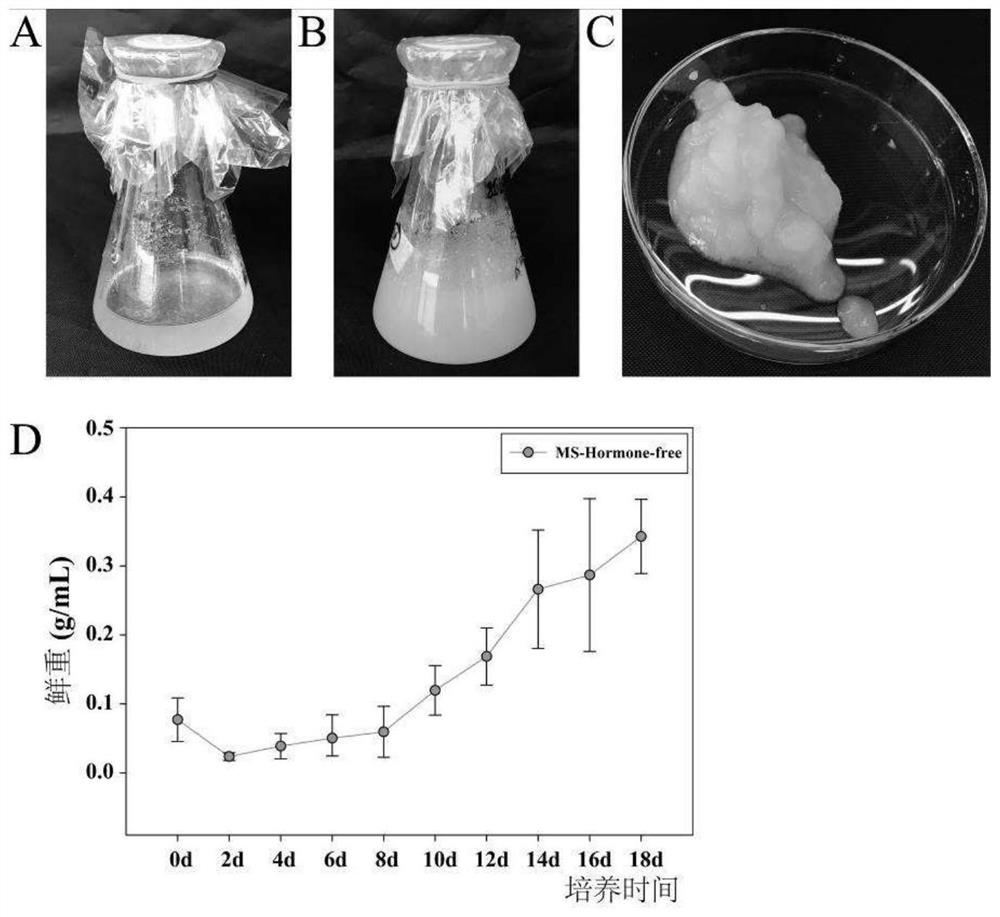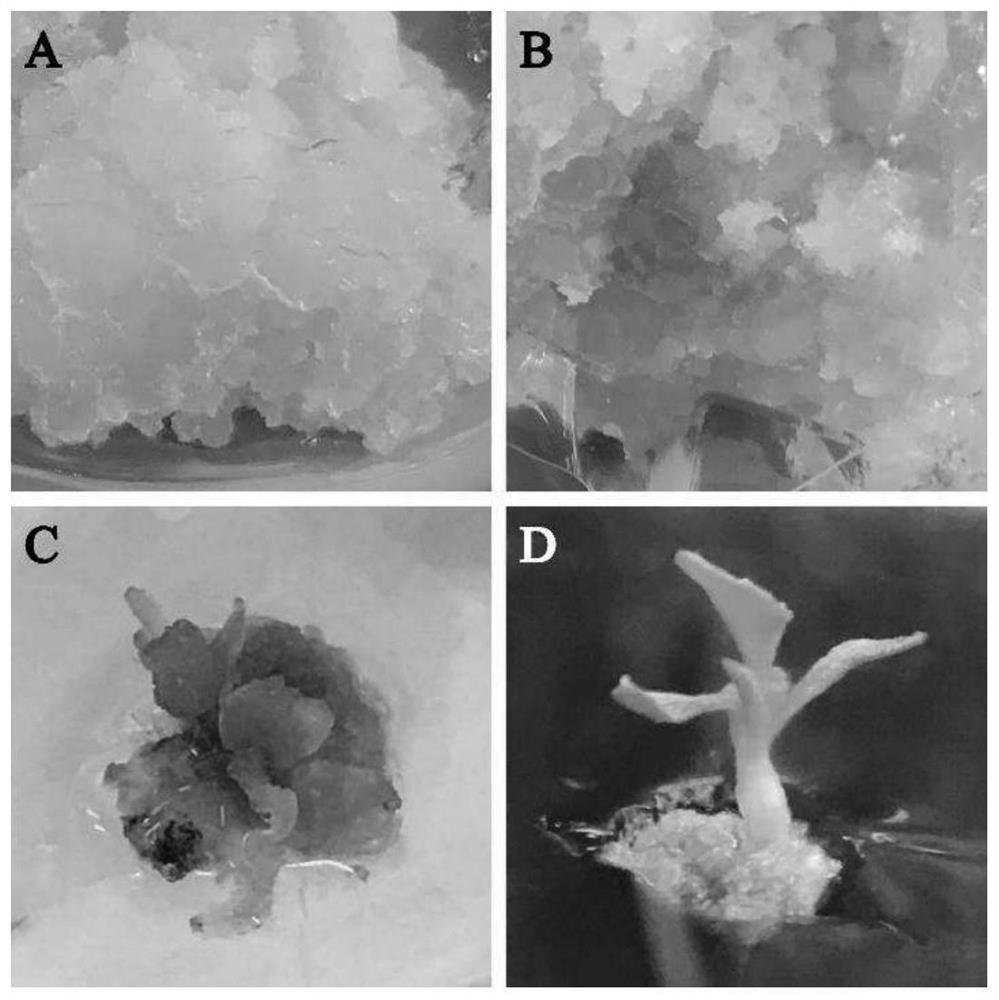Populus alba xP .berolinensis hormone autotrophic cell line capable of realizing plant regeneration
A cell line, autotrophic technology that can be used in the biological field to solve problems such as non-redifferentiation
- Summary
- Abstract
- Description
- Claims
- Application Information
AI Technical Summary
Problems solved by technology
Method used
Image
Examples
example 1
[0013] The acquisition of the Yang hormone autotrophic cell line of example 1 silver
[0014] 1) Pollen picking and callus induction of Populus yinzhong
[0015] In mid-April 2015, the pollen development period of Populus silvery in the campus of Northeast Forestry University was observed by DAIP staining. After the pollen in the mononuclear marginal stage was sterilized in the ultra-clean workbench, it was scattered and inoculated on a medium supplemented with 2mg / L 2, 4-D, 0.5mg / L KT, 30g / L sucrose and 7.5g / L agar In MS medium, callus was induced by culturing in the dark for 30 days.
[0016] 2) Subculture of callus and acquisition of hormone autotrophic cell lines
[0017] The obtained callus was subcultured once every 2 weeks, and after 3 consecutive subcultures, the callus with faster growth and better state was selected, and a loose light yellow callus with vigorous growth was obtained after 5 consecutive subcultures. Then it was transferred to MS medium containing on...
example 2
[0018] Suspension culture of example 2 hormone autotrophic cell line
[0019] The hormone autotrophic cell line with a fresh weight of 0.9-1.2g was placed in a 150mL glass Erlenmeyer flask containing only 50g / L sucrose 50mL MS liquid medium for culture, and the growth of the cell line within 18 days was counted, as shown in figure 2 d. It can be seen from the figure that the growth amount reached 0.45g on the 18th day, an increase of about 9.2 times, and continued to grow until it became viscous and filled the entire culture bottle. The cell line is subcultured every 15-20 days in the medium without any exogenous hormones, which can ensure the best growth state.
example 3
[0020] Plant regeneration of example 3 hormone autotrophic cell line
[0021] The subcultured hormonal autotrophic cell lines were inoculated on MS medium containing different plant growth regulators (Table 1) to induce bud differentiation. Adventitious buds grew in the medium of mg / L TDZ, but no adventitious buds appeared in the other medium settings, and some even browned and died. The induced adventitious buds were cultured for rooting and seedlings were obtained.
[0022] Table 1 Culture medium for inducing bud differentiation of cell lines
[0023]
PUM
 Login to View More
Login to View More Abstract
Description
Claims
Application Information
 Login to View More
Login to View More - R&D
- Intellectual Property
- Life Sciences
- Materials
- Tech Scout
- Unparalleled Data Quality
- Higher Quality Content
- 60% Fewer Hallucinations
Browse by: Latest US Patents, China's latest patents, Technical Efficacy Thesaurus, Application Domain, Technology Topic, Popular Technical Reports.
© 2025 PatSnap. All rights reserved.Legal|Privacy policy|Modern Slavery Act Transparency Statement|Sitemap|About US| Contact US: help@patsnap.com



